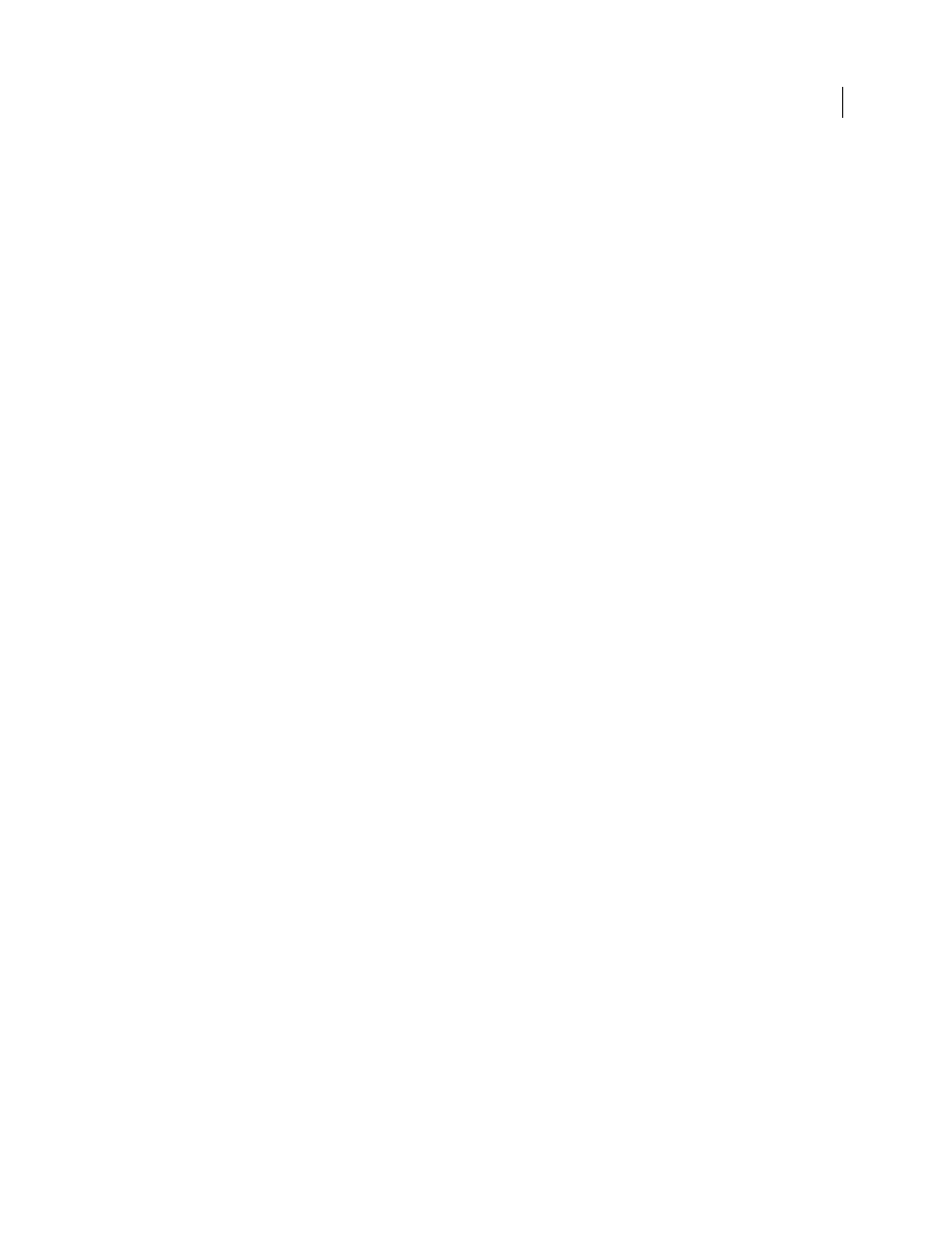Understanding creep, Preview or view a summary of booklet printing – Adobe InDesign CS4 User Manual
Page 625

617
USING INDESIGN CS4
Printing
Bleed Between Pages
Specifies the amount of space used to allow page elements to encroach the gap in Perfect Bound
printer spread styles. This option is sometimes referred to as crossover.) The field accepts values between 0 and half the
Space Between Pages value. You can specify this option only when 2-up Perfect Bound is selected.
Creep
Specifies the amount of space necessary to accommodate paper thickness and folding on each signature. In
most cases, you’ll want to specify a negative value to create a push-in effect. You can specify Creep for 2-up Saddle
Stitch and 2-up Perfect Bound booklet types. (See “
Signature Size
Specifies the number of pages in each signature for 2-up Perfect Bound documents. If the number of
pages to be imposed is not evenly divisible by the Signature Size value, blank pages are added to the end of the
document as necessary.
Automatically Adjust To Fit Marks And Bleeds
Lets InDesign calculate the margins to accommodate the bleeds and the
other printer mark options currently set. The fields under Margins are dimmed when this option is selected, but they
reflect the actual values that will be used to fit marks and bleeds. If you deselect this option, you can adjust the margin
values manually.
Margins
Specifies the amount of space that surrounds the actual printer spread after trimming. To specify individual
values for Top, Bottom, Left, and Right, deselect Automatically Adjust To Fit Marks And Bleeds, and increase the
values to insert extra space beyond the default marks and bleeds. (Decreasing the values may result in clipping the
marks and bleeds.) You can specify margin values for all booklet printing types.
Print Blank Printer Spreads
If the number of pages to be imposed is not evenly divisible by the Signature Size value,
blank pages or spreads are added to the end of the document. Use this option to determine whether those blank spreads
at the end of the document are printed. Note that printing other blank pages in the document is controlled by the Print
Blank Pages option in the Print dialog box.
Understanding creep
Creep specifies the distance pages move away from the spine to accommodate paper thickness and folding in Saddle
Stitch and Perfect Bound documents. InDesign considers the “cover” of the final piece to be the outermost printer
spread, while the “centerfold” is considered to be the innermost printer spread. The term sheet represents two printer
spreads: the front of the sheet and the back of the sheet. The creep increment is calculated by dividing the specified
creep value by the total number of sheets minus one.
For example, a 16-page InDesign document could yield eight printer spreads, or four sheets. The front of the first sheet
will consist of the first printer spread (pages 16 and
1) while the back of the first sheet will consist of the second printer
spread (pages 2 and 15).
If the creep value in this example is 24 points (an exaggerated amount for the sake of clarity), the creep increment is 8
points per sheet (24 divided by 3). The amount of creep applied to the innermost sheet is 24 points, the amount of creep
applied to the third sheet is 16 points, and the amount of creep applied to the second sheet is 8 points. No creep will
be applied to the first outermost sheet.
The amount of creep for each successive sheet is decreased by the creep increment. In summary, each page on the
innermost sheet is moved 12 points (half of the 24-point creep value for this sheet) away from the spine, each page on
the third sheet is moved 8 points (half of the 16-point creep value for this sheet) away from the spine, and each page
on the second sheet is moved 4 points (half of the 8-point creep value for this sheet) away from the spine.
Preview or view a summary of booklet printing
The Preview area of the Print Booklet dialog box lets you review color thumbnails of the printer spreads created by
your selected imposition style. You can also see the printer’s marks you’ve specified in the Print dialog box.
1 Choose File
> Print Booklet.
Updated 18 June 2009
